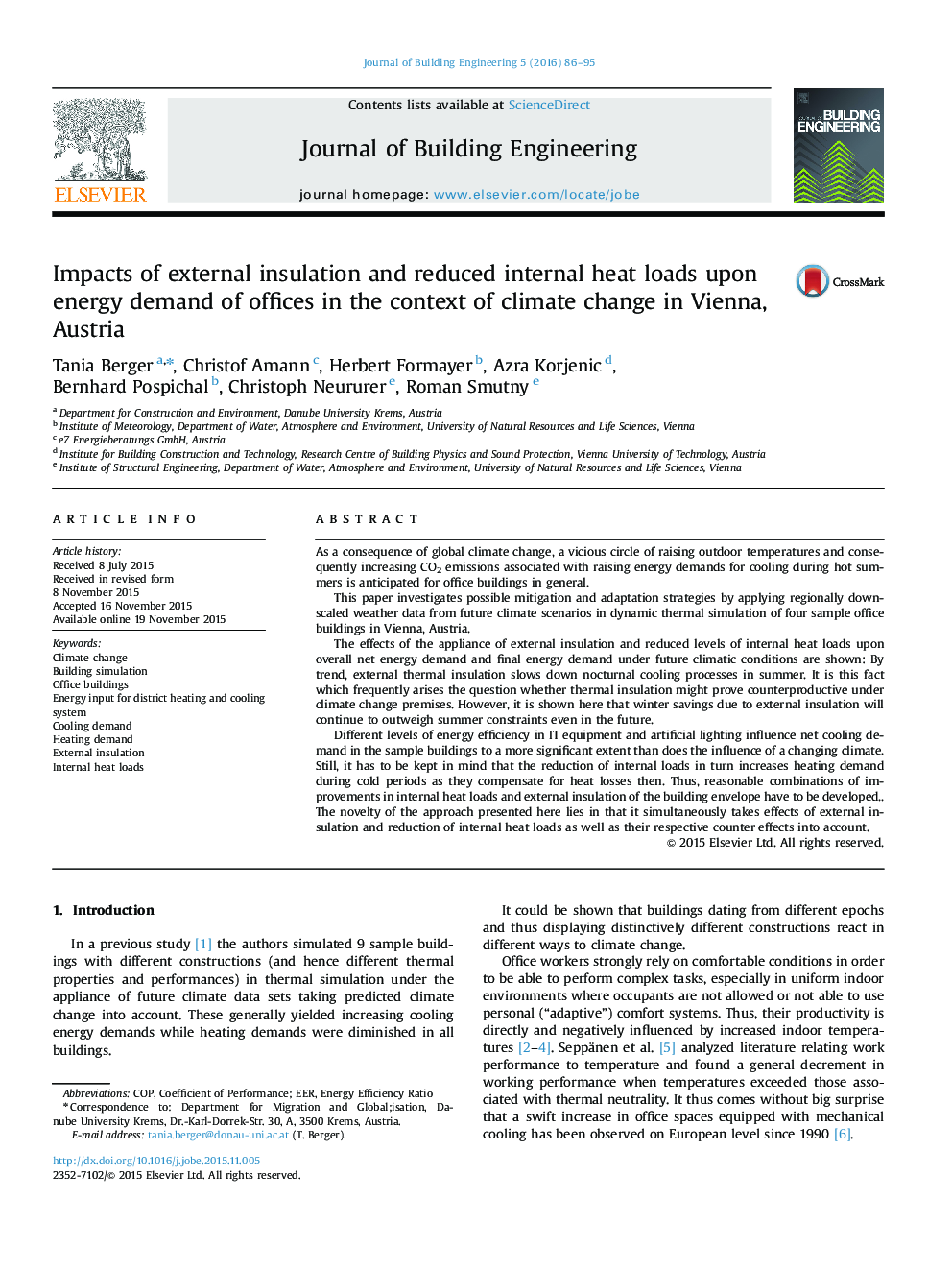| Article ID | Journal | Published Year | Pages | File Type |
|---|---|---|---|---|
| 283838 | Journal of Building Engineering | 2016 | 10 Pages |
•Internal heat gains are the single most influential drivers for cooling demand.•Internal heat gains influence cooling demand more than climate change.•Reduced internal heat gains increase heating demand, but “heating” by internal heat gains is inefficient.•External insulation reduces energy demand for conditioning even under climate change.•Reduced internal heat gains and additional external insulation minimize cooling and heating demand.
As a consequence of global climate change, a vicious circle of raising outdoor temperatures and consequently increasing CO2 emissions associated with raising energy demands for cooling during hot summers is anticipated for office buildings in general.This paper investigates possible mitigation and adaptation strategies by applying regionally downscaled weather data from future climate scenarios in dynamic thermal simulation of four sample office buildings in Vienna, Austria.The effects of the appliance of external insulation and reduced levels of internal heat loads upon overall net energy demand and final energy demand under future climatic conditions are shown: By trend, external thermal insulation slows down nocturnal cooling processes in summer. It is this fact which frequently arises the question whether thermal insulation might prove counterproductive under climate change premises. However, it is shown here that winter savings due to external insulation will continue to outweigh summer constraints even in the future.Different levels of energy efficiency in IT equipment and artificial lighting influence net cooling demand in the sample buildings to a more significant extent than does the influence of a changing climate. Still, it has to be kept in mind that the reduction of internal loads in turn increases heating demand during cold periods as they compensate for heat losses then. Thus, reasonable combinations of improvements in internal heat loads and external insulation of the building envelope have to be developed.. The novelty of the approach presented here lies in that it simultaneously takes effects of external insulation and reduction of internal heat loads as well as their respective counter effects into account.
Graphical abstractFigure optionsDownload full-size imageDownload as PowerPoint slide
